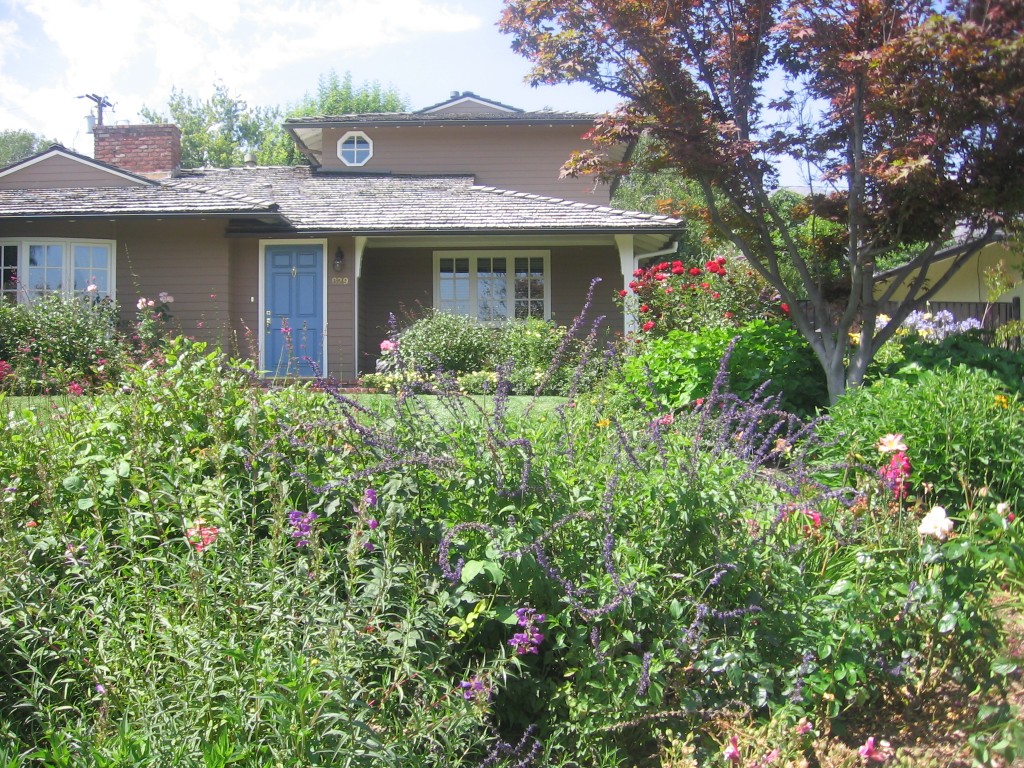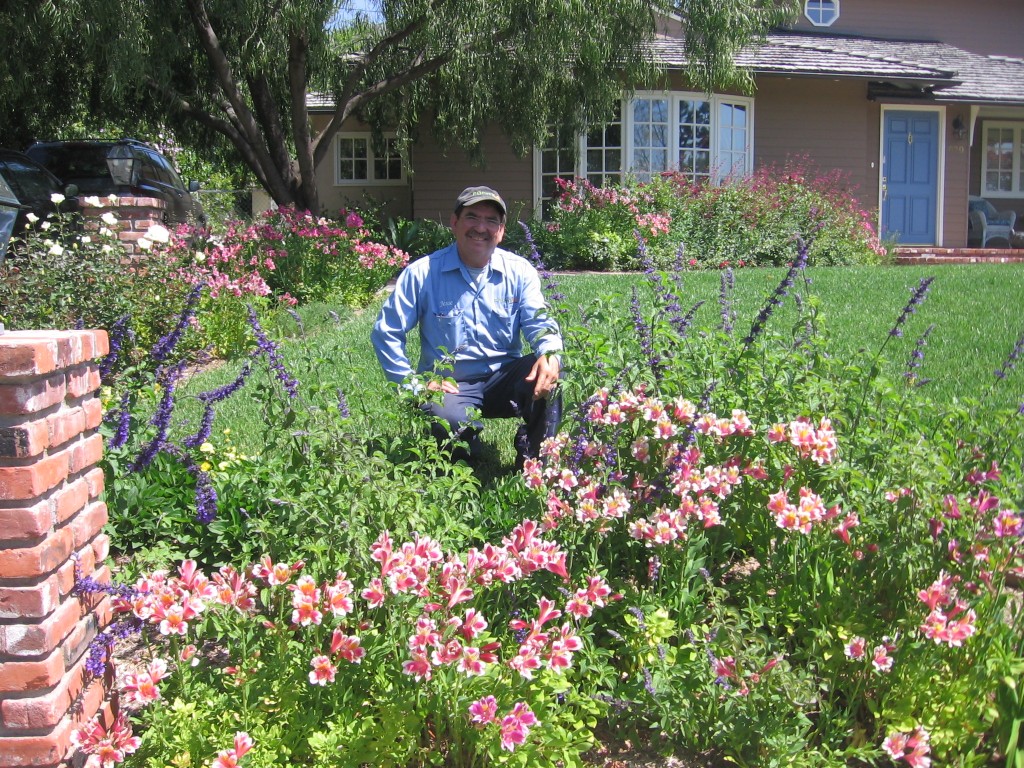7 Simple, Sustainable Strategies for Maintaining a Traditional Landscape
Landscape grants have encouraged many Angelenos to redesign and rebuild their landscapes. While there are great benefits associated with using plant materials authentic to Los Angeles, there are also many ways in which simple shifts in maintenance strategies can reduce water consumption and improve garden vitality. These strategies, alongside creating healthier, happier gardens, will protect your health and that of your kids, pets, and neighbors.
The award-winning Anderson landscape below is a perfect example. While it features traditional landscape materials, it does not need the toxic chemical pesticides, herbicides and fertilizers to appear “loved.”

Here are 7 steps that will keep your garden gorgeous and you and yours healthy:
Prune Smart.
Traditional hedging methods lead to weak, vulnerable new growth that becomes a feast for bugs and fungus. That requires intense maintenance.
In contrast, smart pruning respects a plant’s natural shape and removes weaker branches. The stronger, structural element of the plant remains intact and grows. Main branches get thicker to more efficiently transport water and nutrients, and the plant conserves its resources to fight pests and disease.
Deadhead.
Removing dead flowers from their stems can inspire subsequent bloom periods and, like smart pruning, reduces the amount of decaying matter within the plant.
Bring on the Blooms.
Adding native fill-ins will add full-time, year-round bloom-ability to your garden. Blooming flowers attract beneficial bugs that will feast on rose-decimating aphids in spring. No need for chemical intervention!
Drip Irrigate.
Because water is delivered where it is needed, drip irrigation avoids the overwatering that invites decay and attracts bugs, slugs, fungus, and weeds. Drip irrigation is especially useful for roses, as overhead spray promotes powdery mildew and rust in addition to bug infestations.
Watch the Time.
Watering infrequently but for long periods helps plants develop stamina. Morning watering is best. Watering deeply in the evening creates the cool, moist environments where pests thrive.
Run-Through the Sprinklers.
Quickly fixing line breaks and broken nozzles and trimming plants that divert or inhibit sprinkler spray will prevent the development of over-moist microclimates where slugs and weeds establish themselves.
Ride Your Broom.
Sweeping walks, drives and patios is a great workout! Sweeping cleans more thoroughly, and it encourages early identification of cracks and other potential safety issues. Because it introduces fewer particles to the air, it also sparks fewer allergies and asthma attacks.
Mow Less.
Keeping the lawn taller will allow grass to retain moisture at the roots, as will leaving lawn clippings behind on the lawn. Who would have thought working less would be a great way to keep a lush, green lawn!

The award-winning Anderson garden featured here is maintained by a FormLA Maintenance team lead by Jesse Nunes. Contact the FormLA Maintenance Team for more information about creating a cleaner, safer, healthier landscape.